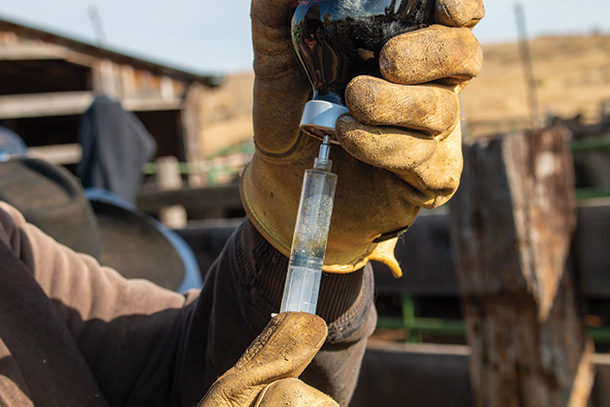If you have not heard of GFI No. 263 yet, you will probably start hearing about it soon. Following the implementation of the Veterinary Feed Directive by the FDA in 2017, many farmers and ranchers were concerned about what would happen next to their ability to obtain non-feed antibiotic medications for their livestock.
In June of 2021, the FDA published GFI No. 263, which will remove any of the remaining antimicrobial medications still available for purchase over the counter. In addition, all medications falling under this new rule will contain a label stating: “Caution: Federal law restricts this drug to use by or on the order of a licensed veterinarian.” So what does this new ruling mean for today’s rancher?
For those farmers and ranchers who already have strong relationships with their veterinarians and purchase most of their products directly, not much will change. However, if you rely on purchasing your antibiotic products at feed stores or farm and ranch centers, the antibiotics you are used to “picking up” may not be available soon. When the GFI No. 263 was published in June 2021, it was written with a two-year phase in, allowing manufacturers to make the necessary label changes and to deploy new marketing strategies so their products can still reach those in need. Knowing these new rules, what products will be removed from the shelves?
The last few commonly used over-the-counter antimicrobials in cattle operations will now only be available through a prescription by a veterinarian; these products include oxytetracycline (and related products such as LA200, LA300), products containing penicillin, tylosin, sulfadimethoxine and sulfamethazine. For a more complete list, you can search for the GFI No. 263. To obtain these products once the new labeling rules come into effect over the next year, you will need to establish a veterinarian-client-patient relationship (VCPR). The basics of this agreement establish the veterinarian’s responsibility to make clinical judgments of the animal’s health and need for treatment. The client then agrees to treat the animal as instructed by the veterinarian. This requires that the veterinarian has recently seen the animal and is aware of their general management practices, placing much more oversight on the veterinarian.
Even though these products are to be removed from the shelves, they will still be accessible through a veterinary prescription. Begin asking your local farm store now if they plan on still carrying these products through a prescription status and what that may look like for you as the operator.
In some cases, as is current practice, your veterinarian can call in your prescription, much like a pharmacy. However, others may decide to discontinue the sale of these products – in which case, you will need to get them directly from your veterinarian. The animal medication industry will continue to change. However, taking steps now will help you when these rules come into effect.









